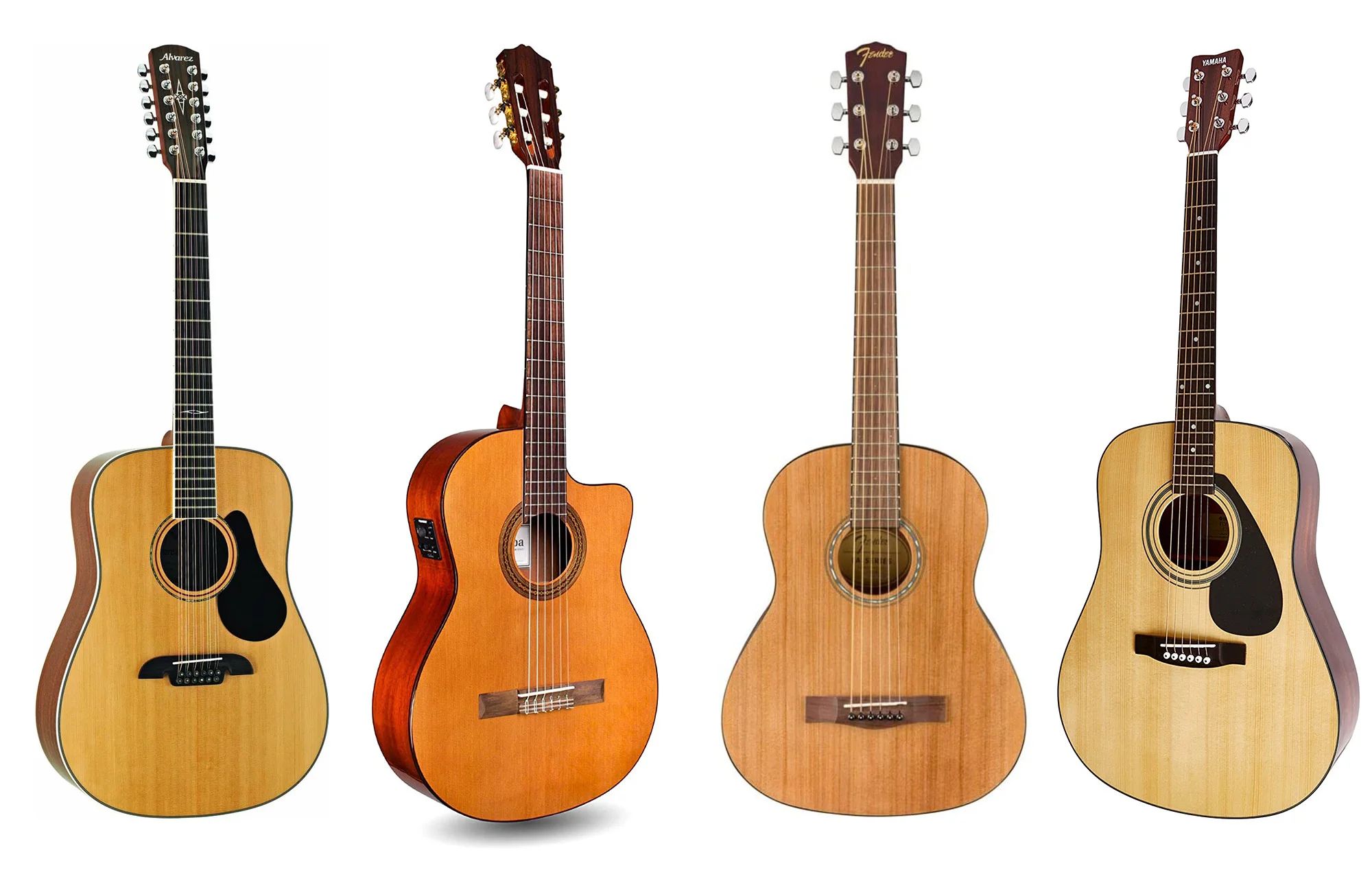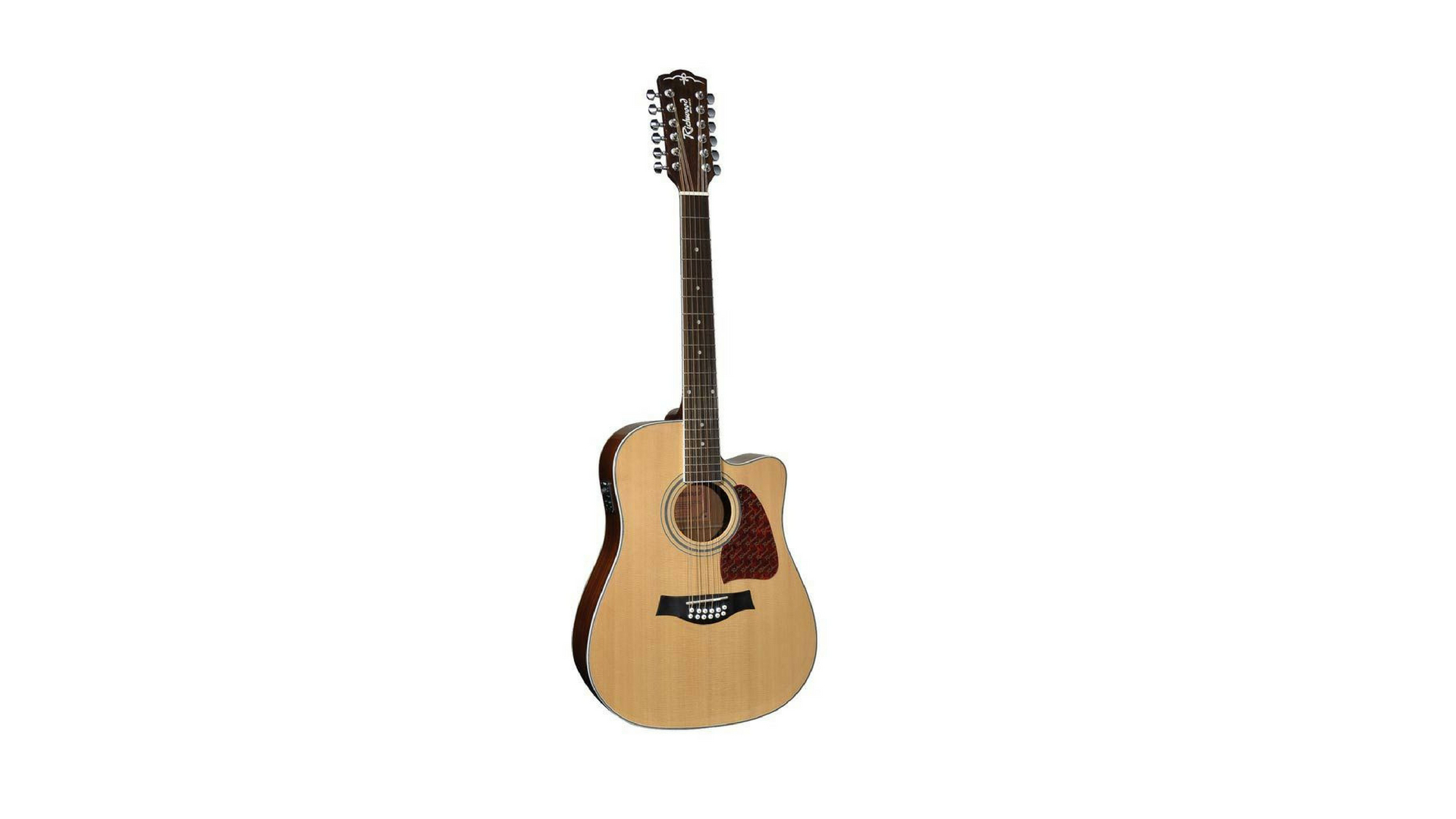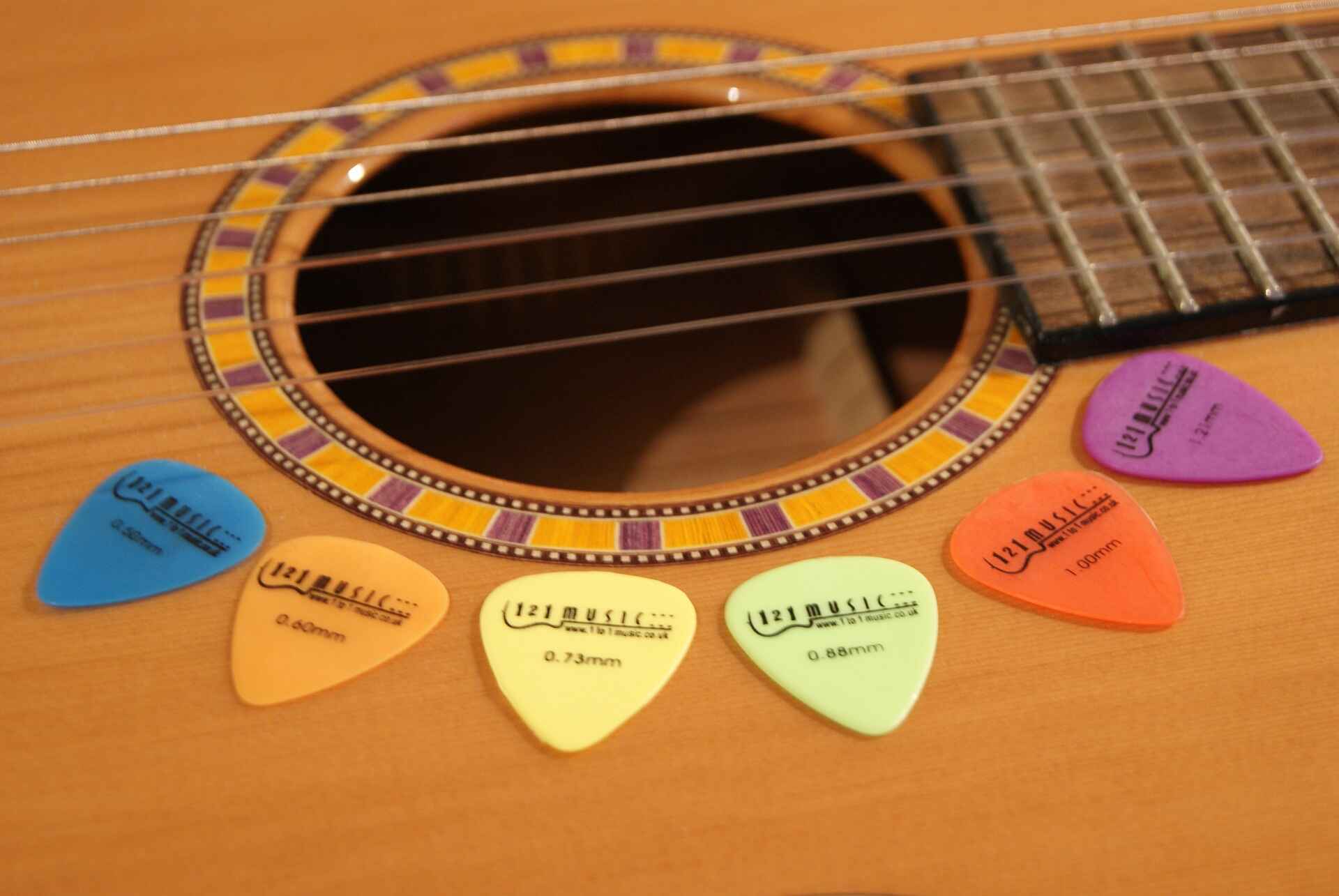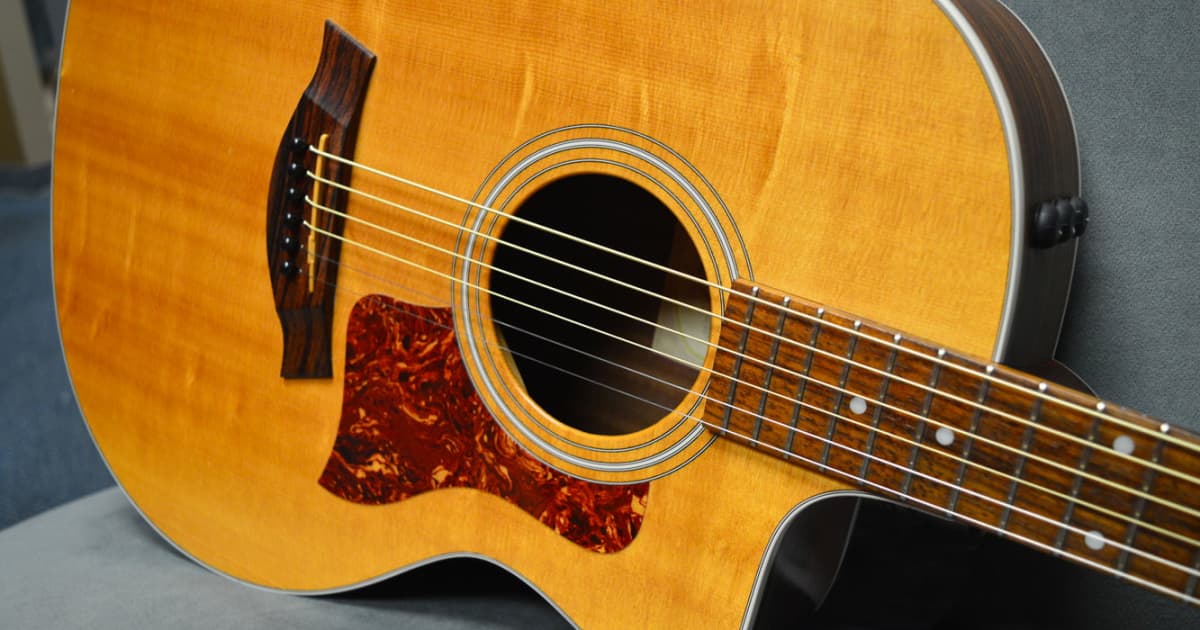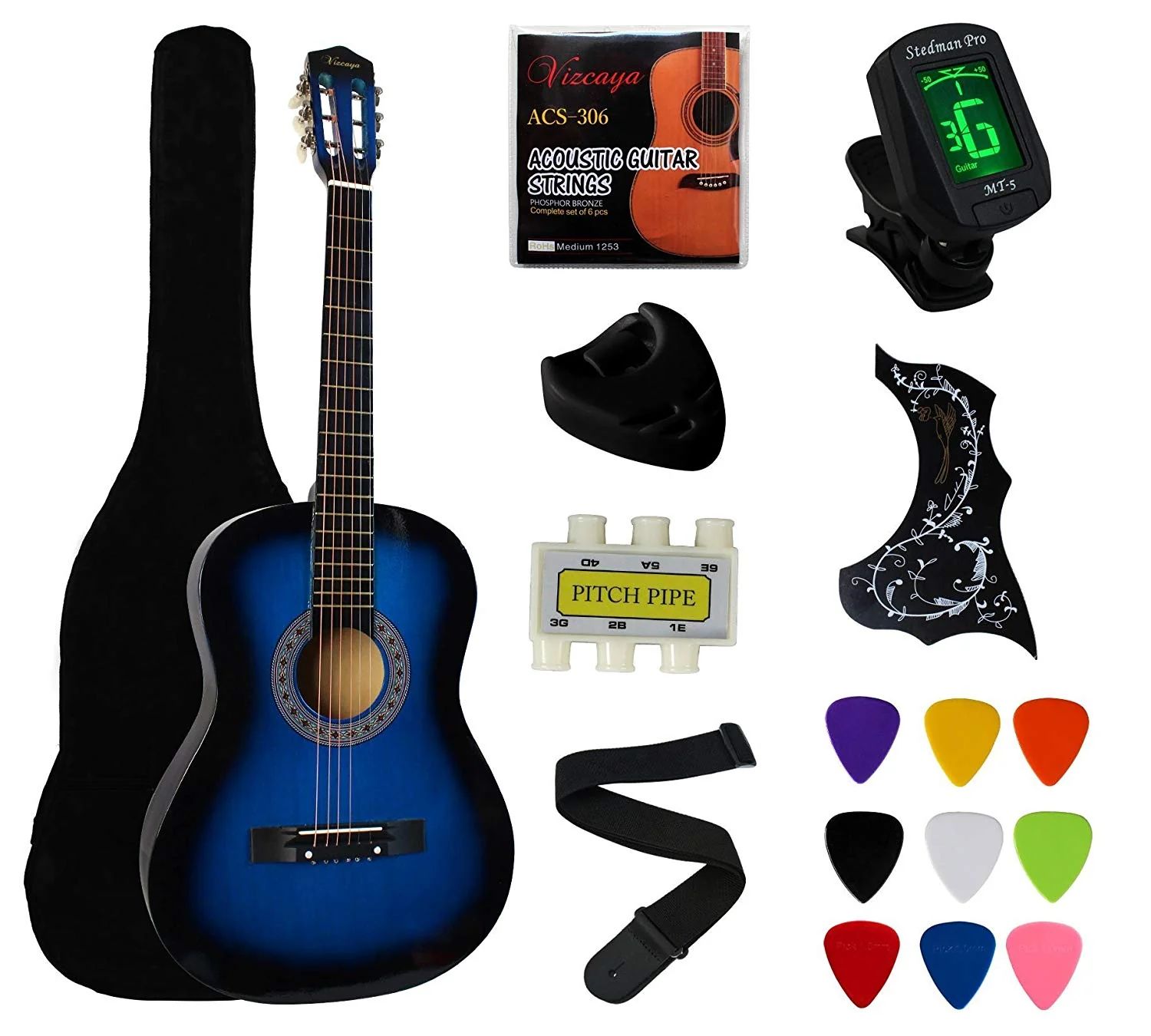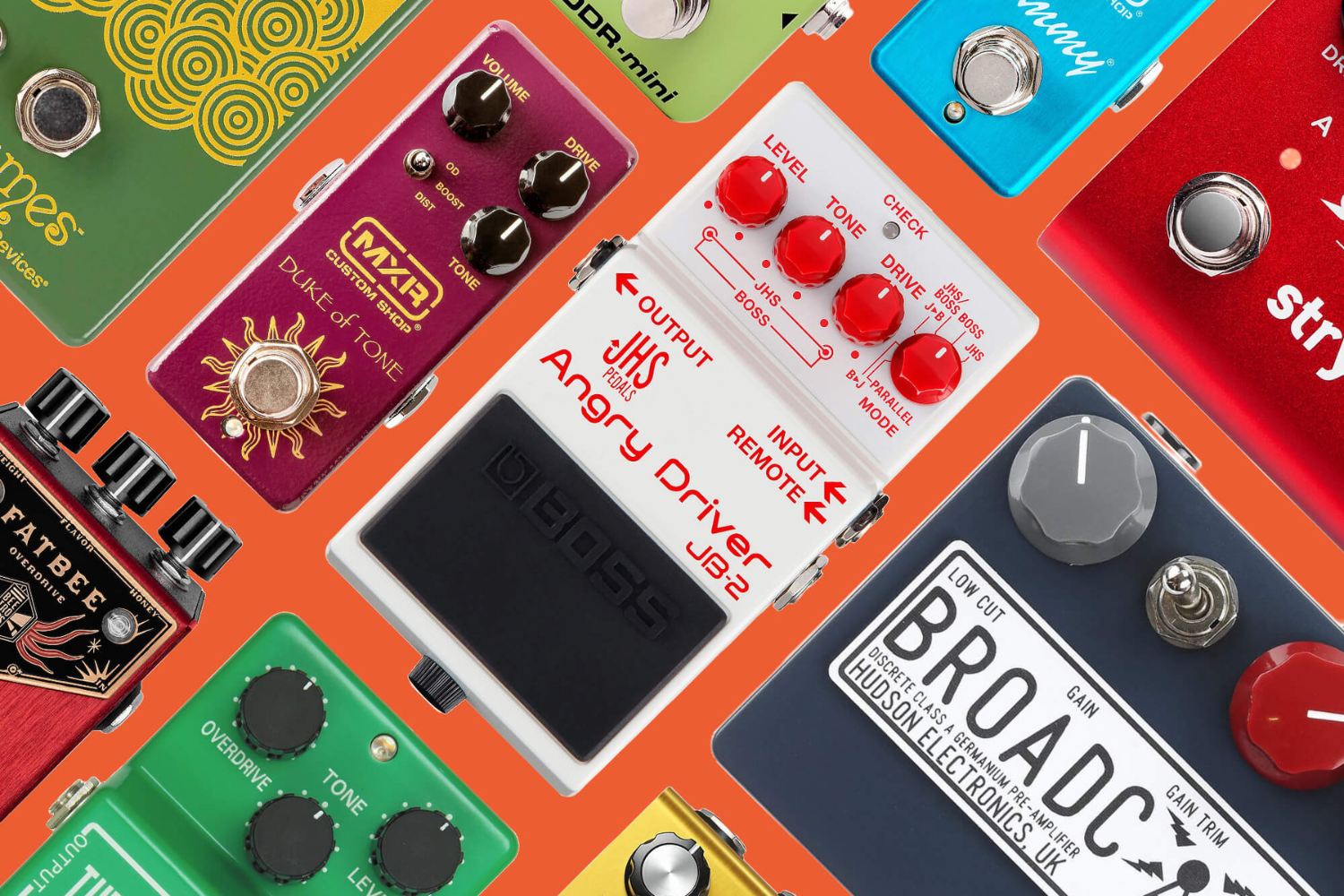Introduction
Welcome to the world of acoustic guitars! Whether you’re a beginner, an intermediate player, or an advanced musician looking to upgrade, finding the right acoustic guitar can be an exciting but daunting process. The acoustic guitar is a versatile instrument that has captivated music lovers for centuries, producing beautiful tones and melodies that resonate with the soul.
Choosing the best kind of acoustic guitar involves considering several factors. It’s essential to find a guitar that matches your playing style, budget, and desired sound. With the wide variety of acoustic guitars available, each with its own unique characteristics, it’s important to educate yourself and make an informed decision.
In this article, we’ll explore the different factors to consider when choosing an acoustic guitar, the various types of acoustic guitars, the comparison of wood types used in their construction, and the pros and cons of steel-string and nylon-string guitars. We’ll also touch on the world of acoustic-electric guitars and provide recommendations for the best acoustic guitars for beginners, intermediate players, and advanced musicians.
Whether you dream of strumming your favorite chords around a campfire, playing intimate acoustic sets at a local coffee shop, or recording your own songs in a professional studio, having the right acoustic guitar is crucial. So, let’s dive into the world of acoustic guitars and discover which one is the perfect fit for you!
Factors to consider when choosing an acoustic guitar
Choosing the right acoustic guitar involves careful consideration of various factors to ensure that you find the perfect instrument that suits your needs and preferences. Here are some key factors to keep in mind:
- Budget: Determine how much you’re willing to invest in your acoustic guitar. Set a realistic budget that allows you to get a quality instrument without breaking the bank.
- Playing Style: Consider the style of music you plan to play. Different acoustic guitars have varying tonal characteristics that may be better suited for specific genres like folk, country, or classical.
- Body Style: Acoustic guitars come in various body styles, including dreadnought, concert, auditorium, and jumbo. Each style has its own size, shape, and sound projection, so choose one that feels comfortable and produces the desired sound.
- Wood Type: The type of wood used in the guitar’s construction significantly impacts its tone and resonance. Common wood types include spruce, cedar, mahogany, and rosewood. Research and listen to samples to determine which wood type resonates with your preferences.
- Neck Profile: The neck profile refers to the shape and thickness of the guitar’s neck. Consider whether you prefer a slim or wide neck profile, as it affects playability and comfort.
- Action and String Tension: The action refers to the height of the strings from the fretboard. Lower action makes it easier to play but may result in more buzzing, while higher action requires more finger strength. String tension also affects playability and tone.
- Hardware and Electronics: If you’re planning to perform live or record, consider whether you want an acoustic-electric model with built-in pickups and preamp systems. Also, pay attention to the quality of tuners, bridge, and other hardware components.
Keep in mind that these factors are subjective, and everyone has different preferences. It’s essential to try out different guitars, ideally in person at a music store, to get a feel for their sound, playability, and comfort. Research online reviews and seek advice from experienced musicians to gain further insights.
By considering these factors and doing thorough research, you’ll be well on your way to finding the ideal acoustic guitar that will inspire and accompany you on your musical journey.
Different types of acoustic guitars
One of the fascinating aspects of acoustic guitars is the wide range of types available, each with its own unique characteristics and sound. Understanding the different types can help you choose the one that best suits your playing style and musical preferences. Here are some common types of acoustic guitars:
- Dreadnought: The dreadnought is one of the most popular and versatile acoustic guitar styles. It features a large body with a deep sound and a powerful, pronounced bass response. Dreadnought guitars are known for their volume and projection, making them ideal for strumming and playing in a band setting.
- Concert: Concert guitars, also known as “parlor” or “folk” guitars, have a smaller body compared to dreadnoughts. They are comfortable to play and produce a balanced sound with good mid-range tones. Concert guitars are suitable for fingerstyle playing and players with smaller physiques.
- Auditorium: Auditorium guitars strike a balance between the larger dreadnought and smaller concert guitars. They have a versatile sound that works well for both strumming and fingerpicking. Auditorium guitars offer a well-balanced tone, clear highs, and defined mid-range frequencies.
- Jumbo: Jumbo guitars feature oversized bodies, delivering a booming sound with a deep bass response. They excel in producing rich, full-bodied tones and are favored by players who enjoy a powerful and robust sound.
- Classical: Classical guitars, often referred to as “nylon-string” guitars, are distinct in their warm and mellow tone. They feature a wide neck and use nylon strings instead of steel, making them suitable for fingerstyle playing and classical music. Classical guitars produce a softer sound compared to steel-string acoustic guitars.
- Travel/Mini: Travel or mini guitars are compact-sized acoustic guitars designed for portability. They are perfect for musicians on the go or those with smaller hands. While they may sacrifice some volume and resonance due to their size, they offer convenience for practicing and traveling.
Each type of acoustic guitar has its own unique sound characteristics and is suited for different playing styles and situations. It’s important to try out various types and see which one resonates with you the most. Consider factors such as comfort, sound projection, and the genre of music you intend to play when choosing the right type of acoustic guitar for your musical journey.
Comparison of different wood types used in acoustic guitars
The type of wood used in the construction of an acoustic guitar plays a significant role in determining its tone, resonance, and overall sound quality. Different wood types offer varying tonal characteristics, allowing players to find the sound that matches their musical preferences. Here are some common wood types used in acoustic guitars:
- Spruce: Spruce is the most popular wood choice for the soundboard (top) of an acoustic guitar. It provides a balanced tone with a bright and clear sound. Spruce offers excellent projection and responsiveness, making it ideal for a wide range of playing styles.
- Cedar: Cedar is known for its warmth and rich tonal qualities. It produces a darker and more mellow sound compared to spruce. Cedar is highly responsive and offers a balanced projection, making it suitable for fingerstyle players and genres like classical or folk music.
- Mahogany: Mahogany is frequently used for the back, sides, and neck of acoustic guitars. It delivers a warm, balanced tone with a strong mid-range and pronounced lows. Mahogany provides a focused sound and is often preferred by blues and folk players.
- Rosewood: Rosewood is prized for its rich and complex sound. It offers a deep, warm tone with enhanced sustain and clarity. Rosewood is commonly used for the back and sides of guitars and adds depth and richness to the overall sound.
- Maple: Maple is known for its bright and clear tone. It provides excellent note definition and a strong attack, making it suitable for players who desire a pronounced and articulate sound. Maple is often used for the back and sides of guitars.
- Mahogany: Mahogany is frequently used for the back, sides, and neck of acoustic guitars. It delivers a warm, balanced tone with a strong mid-range and pronounced lows. Mahogany provides a focused sound and is often preferred by blues and folk players.
Keep in mind that the combination of different wood types used in the guitar’s construction can also impact the overall sound. For example, a spruce top with mahogany back and sides may produce a brighter and more balanced tone compared to a spruce top with rosewood back and sides, which tends to have a warmer and more resonant sound.
Ultimately, the choice of wood depends on your personal preferences and the sound you’re seeking. It’s essential to try out guitars made of different wood types to determine which one resonates with you the most. Consider factors such as tonal characteristics, playing style, and the genre of music you intend to play to find the perfect acoustic guitar that fits your musical expression.
Pros and cons of steel-string and nylon-string acoustic guitars
When it comes to acoustic guitars, there are two primary types of strings: steel and nylon. Each type offers distinct characteristics that contribute to the overall sound and playability of the instrument. Understanding the pros and cons of steel-string and nylon-string guitars can help you make an informed decision based on your musical preferences and playing style.
Steel-string Acoustic Guitars:
Pros:
- Bright and versatile tone: Steel-string guitars produce a bright, vibrant tone that cuts through the mix. They are well-suited for playing genres like folk, rock, pop, and country.
- Wide range of playing styles: With their steel strings and narrower necks, steel-string guitars are conducive to strumming, flatpicking, and lead playing.
- Greater volume and projection: Steel-string guitars are generally louder and have a stronger projection, making them ideal for performances and playing in a band setting.
- Wider variety of body styles: Steel-string guitars come in various body shapes and sizes, allowing players to choose one that fits their playing style and preferred sound.
Cons:
- Higher string tension: The higher string tension of steel-string guitars can be challenging for beginners or those with less finger strength.
- Less forgiving on the fingertips: Steel strings can be harder on the fingers, especially for beginners or players transitioning from nylon strings.
- Less warmth and sustain: Steel-string guitars generally have a brighter sound with less sustain compared to nylon-string guitars.
Nylon-string Acoustic Guitars:
Pros:
- Warm and mellow tone: Nylon-string guitars produce a warm, mellow sound that is well-suited for classical, flamenco, and fingerstyle playing.
- Gentler on the fingertips: The nylon strings are softer on the fingers, making them more comfortable to play, especially for beginners or players with sensitive fingertips.
- Lower string tension: Nylon-string guitars have lower string tension, making them easier to play and suitable for fingerstyle techniques.
- Enhanced sustain: Nylon strings offer longer sustain, allowing notes and chords to ring out beautifully.
Cons:
- Narrower range of playing styles: Nylon-string guitars are typically associated with classical and fingerstyle playing, limiting their versatility in other genres.
- Lower volume and projection: Nylon-string guitars are generally quieter and have less projection compared to steel-string guitars, which may not be ideal for live performances.
- Limited body style options: Nylon-string guitars are often found in classical or traditional body shapes, providing fewer options for players seeking alternative body styles.
Ultimately, the choice between steel-string and nylon-string acoustic guitars depends on your musical preferences, playing style, and the sound you’re looking to achieve. Consider the pros and cons of each type and try out different guitars to find the one that resonates with you and suits your artistic expression.
Acoustic-electric guitars: An overview
Acoustic-electric guitars have gained popularity among musicians due to their versatility and ability to be amplified for live performances and recording. These guitars combine the acoustic qualities of a traditional acoustic guitar with the option to plug in and utilize electronic amplification. Here’s an overview of acoustic-electric guitars:
Acoustic Sound:
Similar to their purely acoustic counterparts, acoustic-electric guitars have hollow bodies that produce a resonant and natural acoustic sound. They are built with tonewoods and bracing patterns that enhance the instrument’s acoustic properties, ensuring a rich and balanced tone even when played unplugged.
Electronics:
The key feature of an acoustic-electric guitar is the built-in electronics. These typically include a pickup system and a preamp. The pickup converts the vibrations of the strings into an electrical signal, while the preamp amplifies the signal and provides tone shaping controls. Some acoustic-electric guitars also come with built-in tuners, allowing for easy and convenient tuning.
Amplification:
By plugging an acoustic-electric guitar into an amplifier or PA system, you can amplify the sound to reach a larger audience. This makes acoustic-electric guitars suitable for live performances, gigs, and recording sessions where the sound needs to be projected more effectively. The ability to control the volume allows for adaptation to different venues and playing situations.
Playing Flexibility:
Acoustic-electric guitars provide the option to switch between acoustic sound and amplified sound, giving musicians more versatility in their playing. They can be used in various styles and genres, ranging from intimate acoustic performances to energetic and loud stages. This flexibility makes acoustic-electric guitars a popular choice among singer-songwriters and musicians who need a single instrument for multiple purposes.
External Sound Processing:
One of the advantages of acoustic-electric guitars is the ability to apply external sound processing. The signal from the preamp can be further shaped and enhanced using effects pedals or other audio processors. This opens up a wide range of creative possibilities and allows guitarists to experiment with different sounds and textures.
Battery-powered Operation:
Many acoustic-electric guitars can be powered by batteries, allowing for portable and independent operation. This makes them suitable for outdoor performances or venues where access to a power source may be limited. The convenience of battery-powered operation adds to the practicality and versatility of acoustic-electric guitars.
Whether you’re a gigging musician, a recording artist, or simply someone who wants the option to amplify their acoustic sound, acoustic-electric guitars provide the best of both acoustic and electric worlds. They combine the natural and resonant tones of an acoustic instrument with the convenience and flexibility of electronic amplification, opening up a whole new world of sonic possibilities.
Best acoustic guitars for beginners
Choosing the right acoustic guitar as a beginner is crucial for developing your skills and enjoying the learning process. Here are some top recommendations for the best acoustic guitars for beginners:
- Yamaha FG800: Yamaha is known for producing high-quality and affordable guitars, and the FG800 is no exception. It offers excellent sound projection, good playability, and a solid build, making it a popular choice among beginners.
- Fender FA-115: The Fender FA-115 is a budget-friendly option that provides great value for beginners. It has a comfortable neck, good sound quality, and a stylish design. This guitar is versatile and suits various playing styles.
- Epiphone DR-100: Epiphone’s DR-100 is an affordable acoustic guitar that offers a rich, warm tone and good playability. It has a classic dreadnought design and is well-suited for beginners looking for a reliable and budget-friendly option.
- Seagull S6 Original: The Seagull S6 Original is a step up in terms of quality and price, but it’s a great investment for beginners with a bit more to spend. It offers excellent sound, craftsmanship, and playability, making it a guitar that can carry beginners into their intermediate years.
- Taylor Academy 10: Taylor guitars are renowned for their quality, and the Academy 10 is a fantastic entry-level option. It has a solid Sitka spruce top, impeccable sound, and a comfortable, easy-to-play neck. The Taylor Academy 10 provides a great platform for beginners to develop their skills.
These are just a few examples of the best acoustic guitars for beginners, but there are many other options available. When choosing a guitar, it’s important to consider factors such as budget, playability, sound quality, and personal preferences. It’s also recommended to try out different guitars in person to find the one that feels comfortable and suits your playing style.
Remember, as a beginner, the most important thing is to focus on developing your skills and enjoying the process of learning. The right guitar will enhance your learning experience and inspire you to continue your musical journey.
Best acoustic guitars for intermediate players
As an intermediate player, you’ve likely developed your skills and are ready to step up to a higher quality acoustic guitar that can further enhance your playing experience. Here are some top recommendations for the best acoustic guitars for intermediate players:
- Martin D-28: The Martin D-28 is a classic and iconic acoustic guitar known for its rich, resonant tone and exceptional craftsmanship. It offers excellent projection and balanced sound, making it a favorite among intermediate players and professionals alike.
- Taylor 314ce: Taylor guitars are renowned for their quality and playability, and the 314ce is no exception. It features a solid Sitka spruce top, a versatile Grand Auditorium body shape, and Taylor’s Expression System electronics for amplified performance.
- Gibson J-45: The Gibson J-45 is a legendary acoustic guitar with a distinctive warm tone and outstanding playability. Its rich sound and versatility make it a favorite among acoustic players in various genres, including folk, rock, and country.
- PRS SE Angelus A50E: PRS guitars are known for their superb craftsmanship and attention to detail, and the SE Angelus A50E is a standout model. It offers a stunning appearance, excellent sound quality, and built-in Fishman electronics for exceptional amplified performance.
- Collings OM2H Orchestra Model: Collings guitars are renowned for their meticulous craftsmanship and attention to detail. The OM2H Orchestra Model is a superb option for intermediate players, offering impeccable tone, responsiveness, and playability.
These are just a few examples of the best acoustic guitars for intermediate players, but there are many other options available. When choosing a guitar, consider factors such as tonal characteristics, playability, and personal preferences. It’s also crucial to try out different guitars in person to find the one that feels comfortable and inspires you to continue exploring your musical potential.
As an intermediate player, investing in a higher quality acoustic guitar can significantly enhance your playing experience and allow you to further develop your skills. The right guitar will inspire and motivate you to reach new heights in your musical journey.
Best acoustic guitars for advanced players
As an advanced player, you’ve honed your skills and are likely looking for a high-quality acoustic guitar that will match your proficiency and demanding musical standards. Here are some top recommendations for the best acoustic guitars for advanced players:
- Taylor 814ce: The Taylor 814ce is a flagship model that showcases Taylor’s exceptional craftsmanship and innovative design. It features a solid Sitka spruce top, Indian rosewood back and sides, and Taylor’s Expression System 2 electronics for impeccable sound and amplified performance.
- Gibson SJ-200: The Gibson SJ-200 is an iconic acoustic guitar known for its bold sound and striking appearance. It offers a booming sound with excellent balance and projection, making it a favorite among advanced players in various genres, including country and folk.
- Martin D-45: The Martin D-45 is a legendary and highly coveted acoustic guitar that epitomizes excellence. It features a solid Sitka spruce top, stunning appointments, and a rich, resonant tone that sets it apart from the rest.
- Collings D2H Dreadnought: Collings guitars are renowned for their precision craftsmanship, and the D2H is a prime example. It offers impeccable tone, projection, and playability, making it a top choice for discerning advanced players.
- Takamine EF360S: Takamine guitars are known for their excellent sound quality and workmanship, and the EF360S is a standout model. It features a solid spruce top, rosewood back and sides, and CT4B II preamp system for exceptional amplified performance.
These are just a few examples of the best acoustic guitars for advanced players, but there are many other options available. Consider factors such as tonal characteristics, build quality, and personal preferences when choosing an advanced-level guitar. It’s also crucial to try out different guitars in person to find the one that feels comfortable and inspires you to continue pushing the boundaries of your musicality.
As an advanced player, investing in a high-quality acoustic guitar ensures that you have an instrument capable of delivering the level of sound and playability you require. The right guitar will fuel your creativity and allow you to express your musical vision with precision and nuance.
Conclusion
Choosing the best acoustic guitar is an important decision that can greatly impact your musical journey. Whether you’re a beginner taking your first steps into the world of guitar playing or an advanced musician looking for an instrument that matches your skill level, there are various factors to consider.
For beginners, finding an acoustic guitar that offers good playability, sound quality, and affordability is crucial. Instruments like the Yamaha FG800 and Fender FA-115 provide excellent options to start your musical journey on the right track.
As you progress to intermediate and advanced levels, you’ll likely want to invest in higher quality guitars that offer superior craftsmanship, tonal characteristics, and playability. Models such as the Taylor 314ce or the Gibson SJ-200 embody the qualities sought after by discerning players seeking exceptional sound and performance.
Remember that personal preference plays a significant role in selecting the right guitar. Consider factors like body style, wood types, and your preferred playing style when making your decision. It’s also highly recommended to try out the guitars in person whenever possible, as this will provide a true sense of how they feel and sound.
Ultimately, the journey of finding the perfect acoustic guitar is an incredibly rewarding one. Explore different options, listen to samples, seek advice from experienced musicians, and trust your instincts. The right acoustic guitar will not only be a companion on your musical journey but also an extension of your unique expression and creativity.







